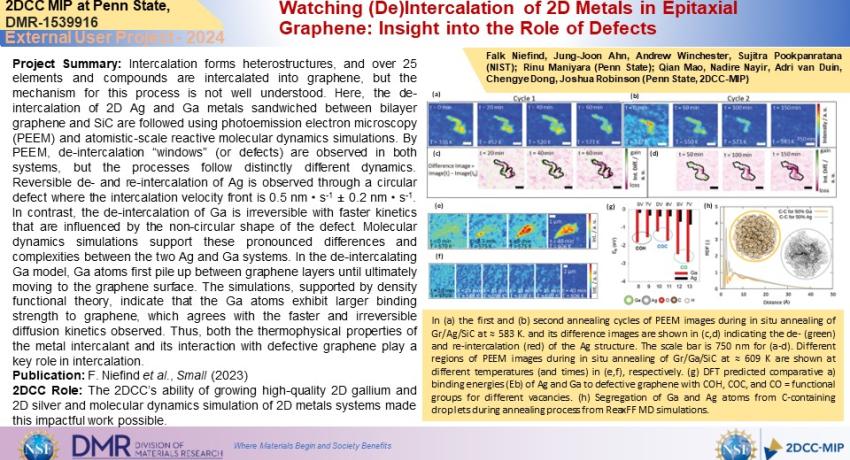Intercalation forms heterostructures, and over 25 elements and compounds are intercalated into graphene, but the mechanism for this process is not well understood. Here, the de-intercalation of 2D Ag and Ga metals sandwiched between bilayer graphene and SiC are followed using photoemission electron microscopy (PEEM) and atomistic-scale reactive molecular dynamics simulations. By PEEM, de-intercalation “windows” (or defects) are observed in both systems, but the processes follow distinctly different dynamics. Reversible de- and re-intercalation of Ag is observed through a circular defect where the intercalation velocity front is 0.5 nm·s-1 ± 0.2 nm·s-1. In contrast, the de-intercalation of Ga is irreversible with faster kinetics that are influenced by the non-circular shape of the defect. Molecular dynamics simulations support these pronounced differences and complexities between the two Ag and Ga systems. In the de-intercalating Ga model, Ga atoms first pile up between graphene layers until ultimately moving to the graphene surface. The simulations, supported by density functional theory, indicate that the Ga atoms exhibit larger binding strength to graphene, which agrees with the faster and irreversible diffusion kinetics observed. Thus, both the thermophysical properties of the metal intercalant and its interaction with defective graphene play a key role in intercalation.
Publication: Niefind, F., Mao, Q., Nayir, N., Kowalik, M., Ahn, J. J., Winchester, A. J., Dong, C., Maniyara, R. A., Robinson, J. A., van Duin, A. C. T., & Pookpanratana, S. (2024). Watching (De)Intercalation of 2D Metals in Epitaxial Graphene: Insight into the Role of Defects. Small, 20(11), 2306554. https://doi.org/10.1002/smll.202306554
2DCC Role: The 2DCC’s ability to grow high-quality 2D gallium and 2D silver and molecular dynamics simulation of 2D metals systems made this impactful work possible.
